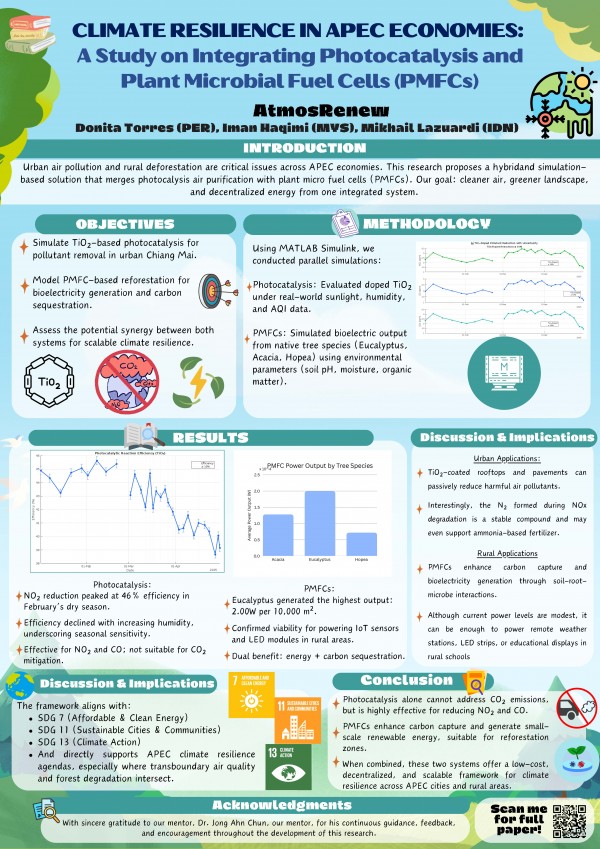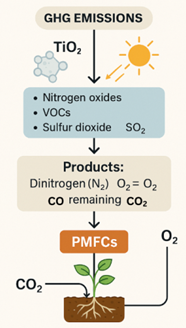
Team : Atmos Renew
Member : Muhammad Mikhail LAZUARDI(IDN), Iman Haqimi MOHAMAD AZLAN(MYS) Donita Valentina TORRES RODRÍGUEZ(PER)
Mentor : Dr. Jong Ahn Chun
Research Title : Climate Resilience in APEC Economies: A Study on Integrating Photocatalysis and Plant Microbial Fuel Cells (PMFCs)
Research summary:
This research looks further into the possibility of a combination integrated framework for climate mitigation mechanism (photocatalytic air cleaning with PMFCs) which provides a two-in-one solution for two of the most significant environmental challenges for APEC economies: urban air quality degradation and rural deforestation. The hybrid treatment strategy is based on the fact that photocatalyst, TiO₂-containing materials, has been used to decompose the major pollutants such as NOₓ, COₓ, and VOCs in the cities under both artificial UV and natural sunlight reflect the performance of Chiang Mai, Thailand. Meanwhile, in PMFC modelling, the bioelectric output of indigenous plants for the same region were being investigated, namely Acacia auriculiformis, Eucalyptus camaldulensis and Hopea odorata.
MATLAB Simulink simulation demonstrates that Eucalyptus camaldulensis presents the maximum energy yield up to 0.5V and ±2.0W over 10,000 m² deployment. Although, the net energy generation capacity is limited, yet capable to power low-energy environmental IoT sensors particularly used in Reforestation. The findings provide encouraging evidence of the potential for synergistic effects between nature-based and engineered systems to drive sustainable infrastructure. Most important limitations of the case study are static soil parameters and simplified load dynamics, but the study also recommends future development on field-calibrated dynamic simulations to increase reliability and transferability.
Moreover, the photocatalytic process not only cleanses air but also releases elemental nitrogen (N₂) as a byproduct, which can potentially be captured and repurposed as a component of sustainable nitrogen-based fertilizers, offering an added benefit in support of soil health and afforestation efforts. To enhance the practical performance of PMFCs,without altering the core system, optimizing root-zone microbial interactions and anode placement geometry to increase electron transfer efficiency would be the way for an improved bioelectric output under natural conditions.Although the study is subject to limitations such as static soil parameters and simplified load dynamics, the findings strongly support the feasibility of synergizing engineered and nature-based systems to enable more sustainable urban-rural infrastructure.

|